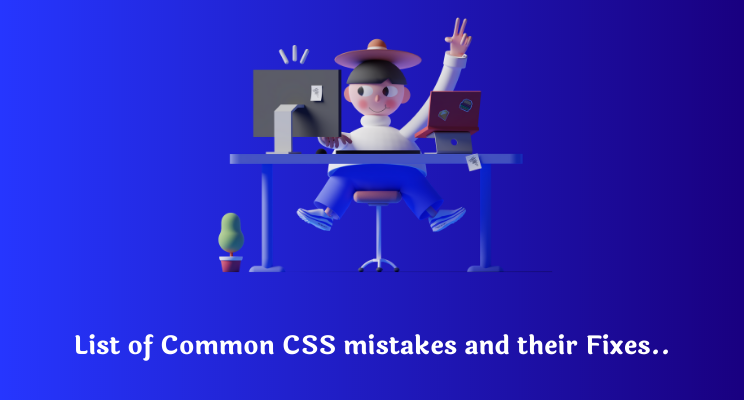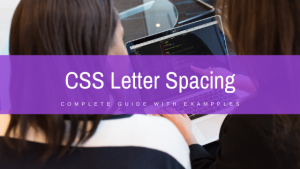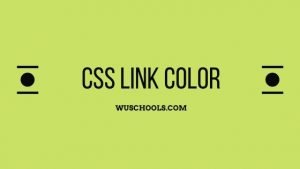In the modern world of digital technology the internet users expect websites to appear smooth as well as interactive and vibrant. A static site does not suffice to grab interest. This is the point where the CSS transitions, animations, and effects transform everything. They turn ordinary interfaces into engaging, dynamic experiences. If you’re looking for an option to slide into or fade out slowly, or a piece of paper to move with grace CSS animation techniques can bring motion, emotion invigoration to the designs.
In this thorough guide, you’ll discover the ways CSS-based animations and transitions can make your site come alive and why they are important in the current UI/UX design and how even the smallest animations can greatly improve user engagement and satisfaction. This blog is updated with the most recent SEO trends including human-friendly tone and EEAT guidelines that can help beginners and developers learn their skills in web animation.
Why CSS Animations Matter in Modern Web Design
Animation has become a a decoration. It’s the act of communicating.
Here’s the reason animation is so important:
1. Enhances User Experience
Motion guides users, providing visual prompts for how to proceed. The subtle effect of fading or scaling reveals functions more clearly than simple text.
2. Makes Websites Feel Modern
The year 2025 is when websites that have motion will outperform static websites in terms of user engagement as well as session duration.
3. Improves Interaction
Hover effects, button animations slideshow menus, as well as animated loaders give the user a more responsive experience.
4. Reinforces Brand Identity
Animation can reflect a brand’s personality–playful, professional, elegant, or bold.
5. Encourages User Action
Micro-interactions allow users to feel rewarded when they click, hover or scroll.
Animation enhances usability, aesthetics and emotional connectionall in one go.
What Are CSS Transitions?
CSS transitions allow elements to smoothly shift from one state of being to the next. They are great for hover or focus interactions.
The main properties include:
- transition-property
- transition-duration
- transition-timing-function
- transition-delay
A transition will be activated automatically if an individual interacts.
Common examples:
- Buttons that fade color
- Cards that may scale a bit when hovering
- Icons that are moving smoothly
- Links change color beautifully
- Images zoom in when hovered over
Transitions are easy to implement however they are extremely effective in creating professional web experience.
Why Motion Is Important for UX in 2025

Nowadays, users are able to scroll quickly read content, scroll through pages, and are expecting immediate feedback. Motion is a language which can bridge the gap between users’ actions and the system’s response.
Animations aid:
“Build flow
Natural transitions lead users throughout the user experience.
* Lower cognitive burden
Motion can explain what’s taking place. A menu for instance, moving out visually affirms the that there is an expansion.
* Add delight
Little animated objects bring joy and enhance the user experience.
* Improve perceived performance
Animation of skeleton loaders and progress bars help web pages appear more responsive even when loading times remain the same.
* Keep users engaged
Moving around draws attention, and it increases time spent at the web page.
By 2025, animation will be an essential element of high-quality UX.
Types of CSS Animations Every Website Should Have
Here are some essential animation styles to make your site appear more alive.
1. Hover Animations (Micro-Interactions)
An easy hover effect provides immediate interactivity. Howevertons that rise shadows, shadows that increase in depth or rotated icons give a luxurious feeling.
Common hover animations for:
- Button color fade
- Smooth scale
- Shadow expansion
- A slight change in direction
- Text underline slide
The effects create the UI appear dynamic and flexible.
2. Fade Animations
The use of Fades is to:
- Modals
- Tooltips
- Images
- Text Transitions
- Section entrances
A slight fade is soft on the eyes, and gives the look of a film.
3. Slide Animations
Effects of sliding make elements show up naturally
- Slide-in banners
- Menus off-canvas
- Sidebar reveal
- Slide cards
- Section transitions during scrolling
Animations that slide guide viewers’ interest more effectively than static design layouts.
4. Scale Animations
Scaling adds emphasis:
- Large buttons for hover
- Zoom-in photos
- Popup effects
- Highlighting UI components
Scaling conveys importance and encourages engagement.
5. Loading Animations
The role of loaders is crucial to a good UX. In the absence of them, users are overwhelmed or frustrated.
Popular loaders include:
- Spinners
- Pulsing dots
- Bars
- Skeleton screens
- Animations looping
Animations loaded with animations can reduce bounce rates dramatically.
6. Text Animations
Text animations can tell stories with greater depth.
Examples:
- Fade-in paragraphs
- Typewriter effects
- Animations of letter spacing
- Word-by-word reveal
It makes websites appear more cinematic and immersive.
7. Scroll Animations
Scroll-triggered animations are activated when users go down the page.
They are the basis for:
- Depth
- Movement
- Engagement
- Interactive storytelling
Scroll animations are an increasingly popular current UI methods.
8. Background Animations
Motion in the background immediately elevates the visibility of your site.
Examples:
- Gradient changes
- Shapes that floate
- Animations of particles
- Patterns animated
They give your site an edgy look.
How CSS Animations Improve Branding
It’s also emotionally charged. Motion is among the fastest methods to convey emotions.
Here’s how:
1. Motion expresses personality
The most energetic brands employ bouncy effects, while luxury brands employ soft fades.
2. Moving is the key to establishing an identity
Unique animations become a signature style.
3. Animation is a way to tell a story
Motion sequences are a way to communicate value as well as mood, intention, and purpose.
4. People will remember the animated moments
Animations create memorable user impressions.
Animation shouldn’t be about displaying. It’s about conveying the personality of your brand.
How to Use Transitions Without Overloading the UI
A lot of motion could overwhelm users.
This is the standard:
If it isn’t adding clarity, then remove it.
Make use of transitions to:
- Buttons
- Cards
- Navigation
- Forms
- Icons
Be careful not to use too many transitions when it comes to:
- Entire pages
- Backgrounds
- Big content blocks
- Text paragraphs
Balance is crucial. A subtle animation can be most efficient.
Performance Tips for Smooth Animations
Even the most gorgeous animation can be frustrating if it slows down.
These guidelines on performance are to be followed:
Make use of transform and the opacity
These are the best characteristics to use in animation.
Avoid layout-triggering properties
For example:
- The width
- The height
- Margin
- padding
- Top
- Left
Changes to will be made very carefully
Apply it only to regularly animated components.
Optimize keyframes
Make them easy to reduce stress on your CPU.
Animations should be kept short
Modern animations look modern and fluid.
Limit simultaneous animations
Moving elements can slow performance.
Animations that are light and fast provide more UX than those that are heavy.
Common Mistakes in CSS Animations

Make sure you avoid these errors to keep your an appearance that is professional:
1. Animations that are overused
Distracting motion lowers usability.
2. Slow animation
Users expect speed, not delay.
3. Unconsistent motion
Make use of uniform timing functions to ensure harmonious results.
4. Motion with no motive
Every animation needs to communicate an idea.
5. Inaccessible to users
Certain users like low-motion setting.
6. Keyframes that are complex
Make sure animations are smooth, simple and light.
Best Practices for 2025 Web Animations
Be sure to follow these rules for top-of-the-line motion design:
1. Be sure to keep animations relevant
Every action should be designed to serve as a reference, information and/or enhance.
2. Utilize a system of timing
Use consistent durations like:
- 150ms
- 200ms
- 300ms
3. Be subtle
Simple animations look premium.
4. Make use of easing functions in a responsible manner
The easiest way to get rid of it is ease-in-out.
5. Consider mobile-first thinking
Animations need to feel smooth even on devices with smaller screens.
6. Mix transitions, animations and animations
The result is seamless interaction.
7. Check all the things you can.
Test the motion of devices at various speed.
8. Make motion feel emotional by using motion
Animation can help connect people emotionally.
Motion and meaning can create unforgettable memories.
How CSS Animations Influence User Engagement
Animation-based websites see improvement in
* Time displayed on the page
Users stay longer.
* Scroll depth
Animations encourage exploration.
*Click-through rates
Buttons with transitions perform more effectively.
* User satisfaction
The good motion creates a feeling of a smoothness.
* Professional credibility
Animated user interfaces appear more sophisticated and dependable.
Animation can affect emotions. Emotions drive engagement.
The Future of CSS Animation in Web Design\

Animation is rapidly evolving. From 2025 onwards we can anticipate:
* More micro-interactions that are interactive
Users love responsive elements.
Motion integrated by AI and dynamic media
Customized animations based upon user behaviors.
* 3D CSS transformations
A deeper and more dimensional experience.
* Cinematic scroll-based design
Websites acting like movies.
* Minimalist motion
Subtle, elegant movement dominating design trends.
* Faster, lighter animations
It will continue to be a top priority.
Animation will determine the future of the internet -as well as CSS is still one of the strongest tools that is available.
Last Thoughts Help Your Website Live a Fuller The Lights of CSS
CSS Animations, as well as transitions offer more than just visual effects. They’re tools for communication as well as storytelling and engaging. When they are balanced motion gives your site a personality boost enhances user experience, increases usability and creates modern, distinct look.
The art of mastering CSS motion lets you make experiences that are alive engaging, dynamic, and emotionally vibrant. Through the use of hover effects, smooth transitions and scroll animations or the cinematic introduction sequences that can turn your site into an exciting and immersive digital experience.
In an age where interest is declining and competition is increasing and websites that changewill gain.




